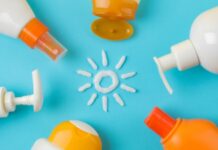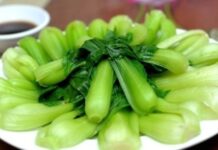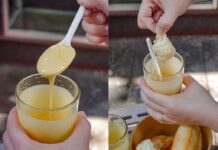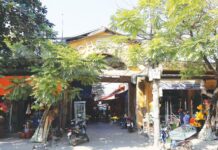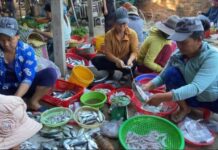## The Power of Self-Healing: Unlocking the Body’s Natural Pharmacy
The Principles of Self-Healing
The human body can be likened to a natural apothecary, housing a myriad of hormones that act as its intrinsic “medicines.” By skillfully combining and regulating these hormones, each person can create over 30 different “prescriptions” to cater to their unique healing needs.
But that’s not all; the body also possesses a self-healing system aided by an “internal doctor.” This intrinsic doctor plays a pivotal role in managing and maintaining the body’s protective and restorative functions. Immune responses, detoxification, cell regeneration and repair, hormone regulation, and stress management all fall under the purview of this internal system.
When an individual encounters health challenges, this “internal doctor” swiftly identifies abnormalities and triggers appropriate responses to adjust bodily functions. It also activates the necessary hormones to support the healing process, aiding the body’s natural and efficient recovery.
The Body’s Innate Healing Abilities
The human organism is adept at utilizing endogenous hormones swiftly and effectively to bolster recovery and sustain well-being. These self-healing mechanisms empower us to overcome a plethora of common ailments, including:
The Common Cold
When the body is invaded by viruses or bacteria, the immune system springs into action, deploying immune cells to combat these pathogens, as seen in the case of a common cold. Typically, a cold can resolve on its own without specific treatment within 5-7 days. Over-the-counter cold medications primarily offer symptomatic relief, such as easing a stuffy nose or cough. To expedite recovery, adequate rest, vitamin C from fruits, approximately 2000ml of daily water intake, and a diet of easily digestible, warming foods are recommended.

The Immune System Fights Off Viruses and Bacteria
Minor Wounds
When faced with injuries, the body possesses the innate ability to repair and promote healing. For instance, in the event of a scrape or cut that draws blood, the body automatically halts bleeding with the help of platelets. Beyond surface wounds, internal afflictions such as stomach ulcers, mouth ulcers, or even broken bones are mended through self-regenerative cell mechanisms, scabbing, and the formation of new tissue.
Mild “Three Highs” (High Blood Fat, High Liver Enzymes, High Blood Sugar)
When the body accumulates excess waste, it efficiently eliminates these toxins through organs like the liver and kidneys. Additionally, a balanced diet coupled with regular exercise aids in shedding excess fat and maintaining optimal health.
Insomnia
Rather than relying on sleeping pills, relaxation techniques and gentle exercises can more effectively alleviate insomnia. This approach not only rejuvenates energy levels but also fosters natural recovery without pharmaceutical dependence.
Fever
In response to viral infections, the body automatically raises its temperature to inhibit bacterial growth. Fevers below 38°C can often be managed through rest and hydration. If weakness persists, incorporating protein, fat, and vitamin-rich foods can bolster the recovery process.
Vomiting
Research indicates that vomiting during pregnancy serves as a protective mechanism, safeguarding the fetus from harmful elements. Similarly, vomiting can be the body’s defensive response to toxic substances or unsafe food.
Diarrhea
Diarrhea is the body’s protective reaction to toxins. This rapid expulsion of waste through diarrhea minimizes the duration of illness. In such cases, instead of hastily reaching for medications, allowing the digestive system to rest and providing timely hydration to maintain balance is advisable.

Diarrhea as a Self-Protective Response
Harnessing the Body’s Self-Healing Potential
While each person is inherently endowed with self-healing capabilities, inappropriate interventions can hinder this innate process. Stimulating the body’s self-healing mechanisms can expedite our recovery. The following are some methods to nurture and enhance the self-healing capacities of various organs:
Boosting the Self-Healing Abilities of the Heart and Blood Vessels
Blood vessels and the heart are intimately connected. Enhancing the heart’s self-healing capacities can also ameliorate vascular issues. To “stimulate” the heart daily, reduce salt intake, supplement with potassium, decrease sodium, and increase calcium to fortify blood vessels. Cucumber seeds and black sesame seeds, rich in calcium, should be incorporated into your daily diet.
Stimulating Bone Regeneration
In the event of a bone fracture, bone cells are automatically activated to initiate the repair process. While vitamin D is often touted for bone health, it is vitamin K that truly seals the deal for bone cells. Therefore, including spinach or broccoli in your daily diet is essential. After approximately six weeks from the fracture, suitable exercise will stimulate bone cells and accelerate recovery.
Promoting Liver Regeneration
The liver is the only organ capable of regenerating itself, even when a portion of its tissue is damaged or necrotic. To stimulate the liver’s self-healing abilities, incorporate folic acid and vitamin B-rich foods, particularly fermented apple juice. Regular consumption of this juice can encourage liver regeneration and support long-term hepatic function improvement.

The Liver’s Remarkable Ability to Regenerate
Enhancing Kidney Recovery
Kidneys possess a robust capacity for regeneration, although this is lesser known. To promote kidney repair, opt for kidney-friendly foods like green vegetables, berries, and potassium-rich fare. A healthy diet coupled with ample hydration maintains kidney health and supports this organ’s self-healing prowess.
Boosting the Digestive System’s Healing
Cells in the digestive system have an incredibly rapid regeneration rate, renewing themselves within 1-2 days. To aid the recovery of the stomach and intestines, prioritize a fiber-rich diet, such as whole grains, at breakfast. This not only stimulates self-healing but also maintains digestive health.
Revitalizing Lung Function
Air pollution, particularly smoke and dust, can impair lung function and impede the organ’s self-repair capabilities. Retinoic acid, found in foods like carrots, sweet potatoes, and mangoes, supports lung recovery. For optimal results, aim for a daily intake of at least 900mg of these foods.
Brain Regeneration and Repair
While the brain’s capacity to generate new neurons decreases with age, it can still regenerate and recover when appropriately stimulated. To bolster this process, engage in physical activities like brisk walking for at least 30 minutes daily, 2-3 times a week. This can enhance neurogenesis and maintain the brain’s self-healing potential.



